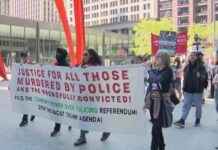A mother from Nassau County has recently taken legal action against the city of New York and the NYPD on behalf of her child, who was shot at the West Indian Day Parade in Brooklyn last year. The lawsuit, filed in state Supreme Court in Brooklyn, alleges that the city and its police department failed to adequately secure the event, leading to the tragic incident that left several people injured and one young man dead. The suit suggests that the police should have anticipated violence at the parade due to previous incidents in the area.
The West Indian Day Parade is an annual celebration that attracts hundreds of thousands of participants and spectators who come together to celebrate the vibrant culture of the Caribbean. However, the event has been marred by violence in the past, particularly during the associated pre-dawn celebration known as J’Ouvert. Despite efforts by the NYPD to enhance security measures, including deploying a large number of officers and utilizing new technology like drones, incidents of violence still occur.
Efforts to Ensure Safety
In response to the shooting that took place during last year’s parade, Mayor Eric Adams and police officials defended their handling of the situation, attributing the violence to a single gunman. While the authorities have yet to make an arrest in connection to the incident, the mayor emphasized that the majority of attendees were peaceful and that the actions of one individual should not overshadow the overall spirit of the parade.
Legal Action and Criticisms
The lawsuit filed by Gail Mincy points to alleged negligence on the part of the city, the police department, and the West Indian American Day Carnival Association for failing to maintain the necessary level of safety and security at the event. The legal action seeks unspecified damages for the child who was injured in the shooting, highlighting the devastating impact of the incident on innocent bystanders.
While some attendees and community leaders have expressed concerns about the security measures in place at the parade, including Brooklyn NAACP president L. Joy Williams, who criticized the lack of crowd control leading up to the shooting, it remains to be seen how the legal proceedings will unfold. The NYPD, the city Law Department, and the Carnival Association have not yet offered any official statements regarding the lawsuit.
The shooting incident that occurred during the West Indian Day Parade serves as a stark reminder of the challenges faced by law enforcement agencies in maintaining public safety during large-scale events. As the legal process moves forward, the outcome of the lawsuit will likely have broader implications for how future parades and festivals are organized and secured in order to prevent similar tragedies from happening again.












